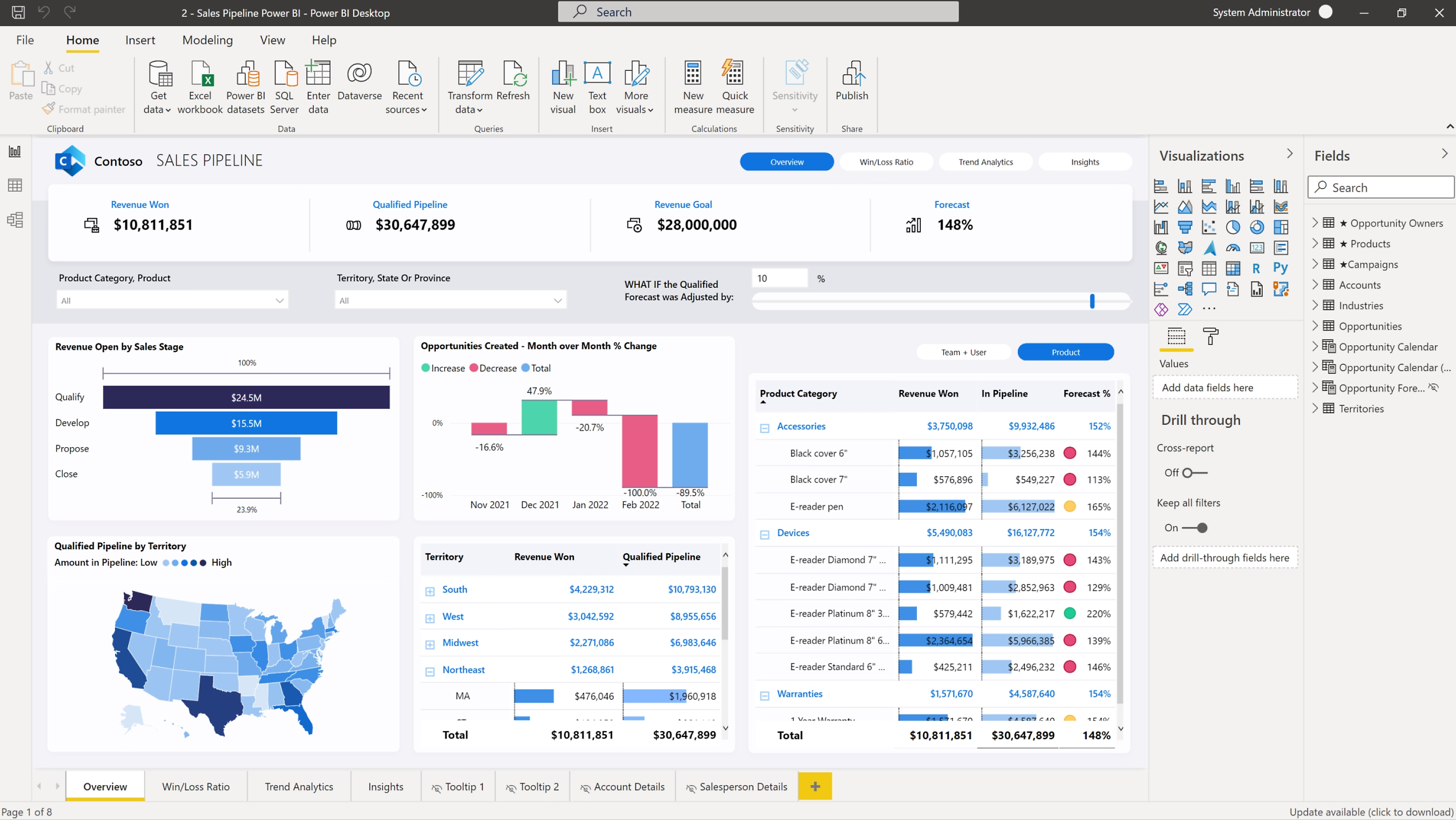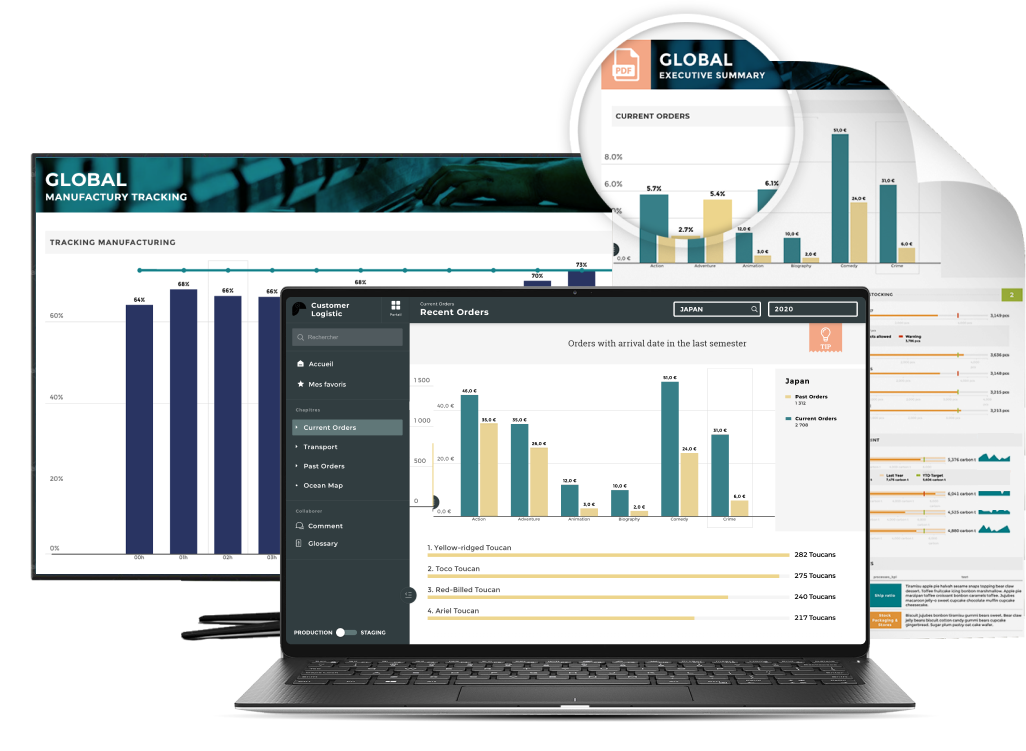
Looker is a leading business intelligence (BI) and data analytics tool, widely praised for its powerful capabilities. However, it can be complex to use, lacks of performance, and doesn't fit all business needs or budgets.
Whether you’re looking for easier usability, better integration, more advanced features, or cost-effective solutions, there are several robust alternatives to consider.
Here, we explore the top five alternatives to Looker for 2024, each offering unique strengths to help you make the best choice for your organization.
Comparison Criteria
When evaluating alternatives to Looker, we considered:
- Ease of Use
- Integration Capabilities
- Cost
- Support and Community
- Customization Options
1. Toucan

Use Case:
Best for organizations needing to create engaging data experiences for their customers and users. Best to embed analytics in a SaaS product.

Features:
- no-code environment: Fastest for technical users, easy to manipulate for non-technical users.
- data storytelling framework: helps create engaging and compelling data visualizations.
- Data prep features: YouPrep™ allows easy data manipulation.
Pros:
- User-friendly interface
- Quick setup and deployment
Cons:
- Limited advanced analytics features
Pricing:
Toucan offers flexible pricing plans tailored to different business sizes. Contact their sales team for detailed pricing.
User Reviews:
The tool perfectly fulfills its embedded analytics role. The interface is very pleasant compared to many other tools. Tiles and stories are very easy to build, and the various filtering and cross-filtering possibilities between graphs offer your users excellent data readability. The UI is top-notch.
- Simon A. - Data analyst for from G2
2. Tableau

Use Case:
Best for organizations that need advanced and interactive data visualizations for in-depth data analysis.

Features:
- User-friendly: Does not require learning a new scripting language.
- Robust functionality: Offers comprehensive analytics tools.
- Wide Range of Data Sources: Connects to numerous data sources seamlessly.
Pros:
- Excellent visualization capabilities
- Strong community and support
Cons:
- Higher learning curve for advanced features
- Can be expensive for smaller businesses
Pricing:
Tableau offers various pricing options, including a free trial. Pricing details are available on their website.
User Reviews:
"Tableau's visualization tools are second to none, making data interpretation a breeze." – User review
3. Power BI

Use Case:
Perfect for businesses already using Microsoft products looking for seamless integration.

Features:
- Integration: Seamlessly integrates with other Microsoft products.
- Comprehensive tools: Offers extensive data analytics and visualization tools.
Pros:
- Strong integration with Microsoft ecosystem
- Affordable pricing options
Cons:
- Can be complex for non-technical users
- Limited customization
Pricing:
Power BI offers a range of pricing plans, including a free version and premium options. Details are available on their website.
User Reviews:
"while Microsoft Power BI Desktop offers a range of powerful features, it's not without its challenges. The learning curve, potential licensing costs, and resource-intensive nature of the software can be factors that some users find disadvantageous, particularly when they are new to the tool or working with limited resources." - Nick V. - Mid Maket - From G2
4. Qlik Sense

Use Case:
Best for technical teams requiring deep customization and advanced data analytics.

Features:
- Advanced analytics: Offers powerful data analytics capabilities.
- Custom scripting: Requires learning Qlik’s unique scripting language.
Pros:
- Advanced analytics and customization
- Strong data integration
Cons:
- Steeper learning curve
- Higher cost for premium features
Pricing:
Qlik Sense offers various pricing tiers, including a free version. More details are available on their website.
User Reviews:
Powerful data modeling and rapid dashboard delivery which doesn't require a data warehouse or data cubes in place.
The tool could be expensive and you have to pay separately for different capabilities. For instance have to buy addon for just the alerting feature. Similarly for a large audience or ability to publish the visualizations publicly could be expensive.Ahrmed S. - Program Manager, Solution Architect & Analyst- GCAA Websites and Apps-
Review collected by and hosted on G2.com.
5. MetabasE
![]()
Use Case:
Ideal for small to medium-sized businesses needing a cost-effective and straightforward BI tool.
Features:
- Open-source: Free to use and customizable.
- User-friendly: Simple interface for non-technical users.
Pros:
- Cost-effective (open-source)
- Easy to set up and use
- Ideal for early-stage business
Cons:
- Limited advanced features
- Requires technical knowledge for customization
- Poor sharing capabilities
- Limited scaling
Pricing:
Metabase is free and open-source, with paid plans for additional features and support.
User Reviews:
Easy interface and less latency of the platform. Once backend data is set, anyone with or without much technical knowledge can use the platform. Also, it comes with a SQL query editor for users with knowledge of SQL, which takes care of the complex data pull/visualization.
As it is an open-source product, there is minimum to low support available. There are some known bugs existing for very long time but is not been solved yet. Also, graphs/ chats are very basic.
Kanishka S. - Manager, Analytics - Review collected by and hosted on G2.com.
Conclusion
Each of these Looker alternatives offers unique features and benefits, catering to different business needs. Whether you prioritize ease of use, advanced analytics, or cost-effectiveness, there is an option that can meet your requirements. Evaluate your specific needs and choose the tool that best aligns with your business goals.






